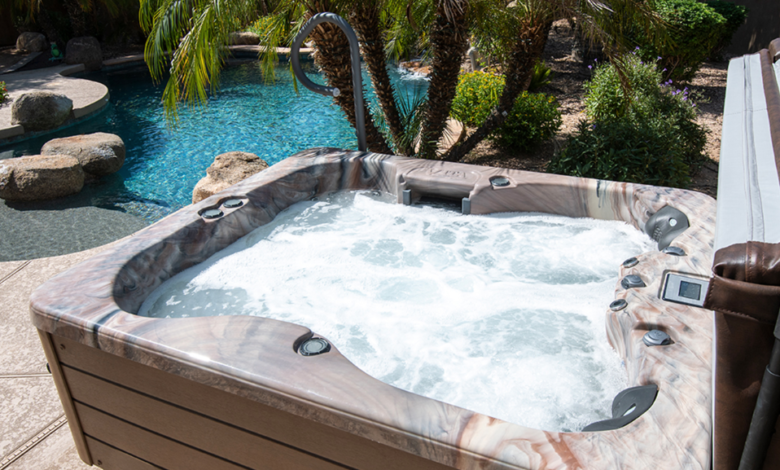The Benefits of UV Sanitation for Spas Over Traditional Chemicals

Clean, balanced water is essential for any spa experience. Traditional sanitizers such as chlorine and bromine have long been the standard, but ultraviolet (UV) technology now offers an additional method to help maintain cleaner, clearer water.
Understanding how UV sanitation for spas works and how it complements chemical treatment can help spa owners make informed decisions about water care.
What Is UV Sanitation for Spas?
UV sanitation systems disinfect water by exposing it to ultraviolet light as it passes through a treatment chamber. The UV-C wavelength damages the DNA of microorganisms such as bacteria, viruses, and algae, preventing them from reproducing. Because the process adds nothing to the water, it leaves no residues or by-products.
Installed in the spa’s circulation line, a UV system treats the water continuously as it flows through the filter. This form of sanitation works alongside small doses of chemical sanitizer rather than replacing them entirely. This helps maintain consistent water quality with less chemical demand.
Key Benefits of UV Sanitation for Spas
1. Reliable Microbial Control
Chemical sanitizers are generally effective but can be influenced by factors such as temperature, pH, and sanitizer concentration. UV sanitation offers a steady layer of disinfection by neutralizing microorganisms directly as the water circulates.
This process can help reduce the presence of bacteria, viruses, and algae, supporting cleaner water between maintenance routines. When used correctly and in combination with filtration and proper chemical balance, UV sanitation contributes to a more consistent level of hygiene.
2. Lower Chemical Requirements
A major advantage of UV sanitation for spas is its ability to reduce the amount of chlorine or bromine required to maintain safe water. Because the UV system neutralizes many microorganisms on contact, lower sanitizer levels are often sufficient to meet safety guidelines.
Reducing chemical use can make maintenance more straightforward and help prevent issues associated with high sanitizer concentrations, such as strong odours or potential irritation. Routine water testing remains important, but the frequency of chemical adjustments may decrease once the UV system is in place.
3. Improved Comfort
Spa users often prefer water that feels gentle and balanced. Excessive sanitizer levels can cause dry skin, eye irritation, or a noticeable chemical scent. With UV technology reducing the need for high chemical doses, the water may feel softer and more neutral.
In addition, UV treatment helps maintain clearer water, which many spa owners find visually appealing. These comfort and aesthetic improvements make UV systems a practical enhancement for those seeking a more pleasant spa experience.
4. Environmentally and Economically Responsible
Reducing chemical consumption benefits both users and the environment. Fewer chemicals mean less packaging waste and lower transportation and storage needs. UV systems also operate efficiently, typically consuming minimal electricity compared with other spa equipment.
While installation involves an initial expense, many owners find that reduced chemical use and simplified maintenance can balance the cost over time. Most systems require only periodic lamp replacement and cleaning, making them a low-effort addition to ongoing care routines.
5. Straightforward Maintenance
Operating a UV sanitation system is simple once it’s installed. The primary tasks are to replace the UV lamp according to the manufacturer’s schedule—usually every 9 to 12 months—and to clean the quartz sleeve to ensure the light remains effective.
It’s important to note that UV light only treats water as it flows through the chamber. For continuous protection, a small residual level of chlorine or bromine is still needed in the water between cycles. Maintaining proper pH, alkalinity, and calcium hardness remains essential for both sanitation and spa equipment longevity.
See also: Creating a Home That Feels Warm, Stylish, and Full of Life
Additional Considerations
Before installing a UV sanitation system for spas, owners should assess compatibility, flow rate, and overall maintenance requirements. Consulting a qualified technician ensures proper setup and operation. Following local health regulations is also important, as some jurisdictions require a minimum level of sanitizer regardless of supplemental systems.
Final Thoughts
UV sanitation for spas provides an effective and practical complement to traditional water-treatment methods. Using ultraviolet light to neutralize microorganisms helps reduce reliance on chemical disinfectants while maintaining clear, hygienic water.
Although it does not replace chlorine or bromine entirely, UV technology supports a balanced, science-based approach to spa care. For those looking to simplify maintenance and promote a more comfortable soaking experience, UV sanitation for spas represents a reliable and environmentally responsible option.




